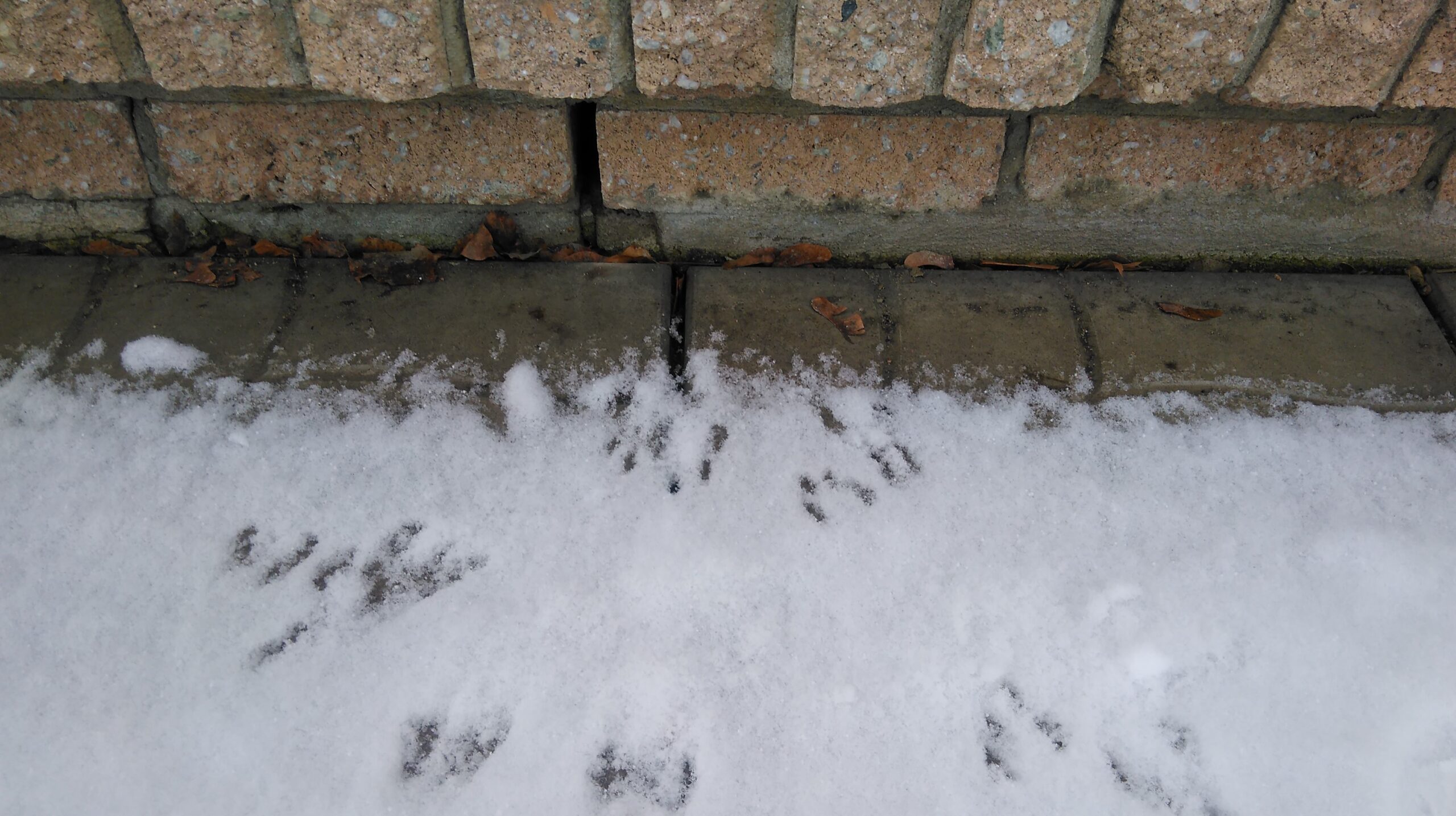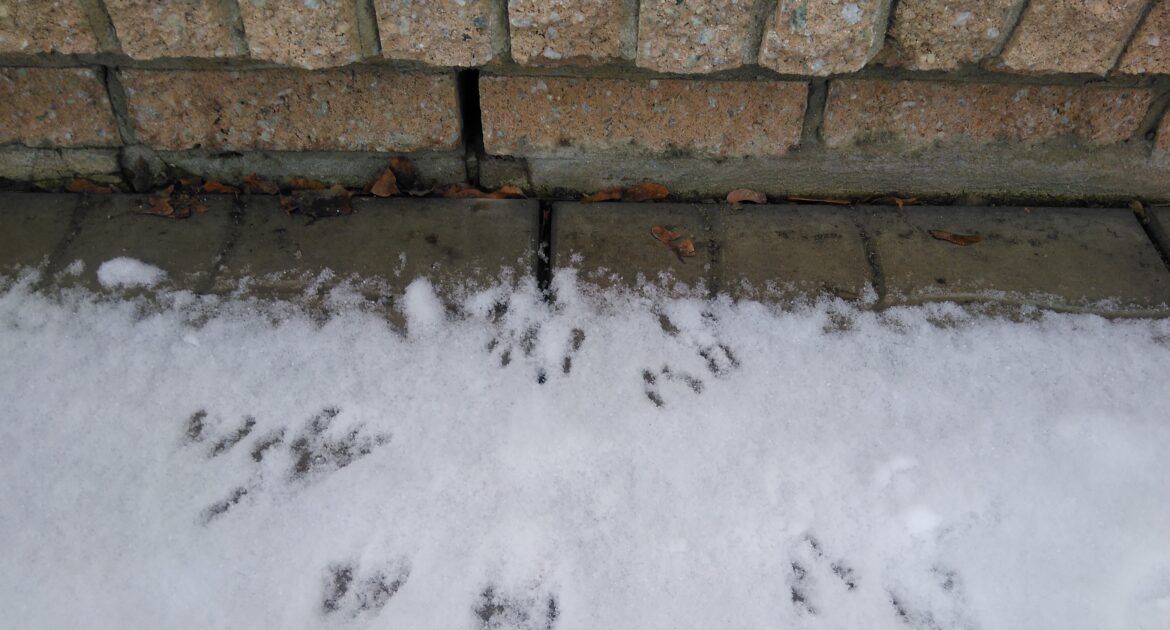Winter can be tough on all of us, but it can be especially challenging for wildlife as they seek shelter from the harsh conditions. During this time, many animals wander closer to human habitats, searching for warmth and food. This seasonal migration raises the question of how wildlife survive in winter and where do wildlife go in the winter.
With limited resources, these creatures often find refuge in human-made structures, leading to unexpected intrusions. Understanding how winter affects wildlife is important for both homeowners and animal lovers, as it allows us to anticipate potential problems and respond with empathy and effective solutions. From raccoons hiding in attics to mice finding their way into basements, the need for safety and nourishment drives them closer to us. It’s essential to balance keeping our homes secure while also respecting the natural instincts of these animals.
In this article, you’ll discover common challenges posed by winter wildlife, practical steps to manage these encounters, and how to ensure safety without harm. With knowledge and preparation, we can coexist with the natural world, even in the coldest months.
The Search for Warmth and Shelter
As the cold sets in, animals begin an instinct-driven search for warmth. Their need to survive leads them to explore every nook and cranny of human structures. Squirrels, known for their agility, can easily climb and find entry points into attics. Raccoons, with their dexterous paws, can manipulate openings to gain access. Meanwhile, mice squeeze through the tiniest gaps. This relentless pursuit of shelter can lead to unsettling encounters within your home.
The consequences of these invasions extend beyond mere inconvenience. Wildlife can damage insulation, chew electrical wiring, and leave droppings that pose health risks. Understanding these behaviors is the first step to preventing them. Identifying potential entry points around your home can provide critical insight. Sealing gaps with durable materials and reinforcing existing structures are effective preventive measures.
At Skedaddle, we emphasize humane practices. Rather than resorting to harmful traps, we advocate for exclusion methods that allow wildlife to exit safely without reentry. It’s a win-win solution that respects nature while safeguarding your home. By focusing on humane prevention, we ensure both your peace of mind and the well-being of wildlife. Our approach has proven effective in countless scenarios, providing reliable results and protecting homes across the region.
Seasonal Patterns of Wildlife Movement
Where do wildlife go in the winter when their natural habitats become inhospitable? Many animals exhibit seasonal movement patterns, driven by instinctual needs. Birds migrate thousands of miles, but others, like bats, seek local shelters to hibernate. Understanding these patterns helps predict which wildlife might seek refuge in human environments during colder months.
Raccoons are particularly adaptable, often using their keen sense of smell and intelligence to locate new habitats. Squirrels, on the other hand, cache food supplies in various locations to sustain themselves throughout the season. Mice and rats multiply in numbers, increasing their presence in urban areas. Observing these behaviors provides valuable insight into the types of wildlife that might seek access to your home.
Being proactive is essential. Regularly inspecting your property for signs of wildlife activity can prevent unexpected surprises. Look for chewed wires, disrupted insulation, or animal droppings. Early detection allows for timely intervention. At Skedaddle, we recommend regular maintenance checks, especially before winter sets in, to ensure your home remains a secure and unwelcome environment for wildlife.
Where Do Wildlife Go in the Winter? Human Habitats
Understanding the underlying reasons for wildlife seeking human habitats is critical. The primary factors include food scarcity, lack of natural shelter, and the promise of warmth provided by human structures. With natural food sources dwindling, animals are drawn to the scent of food emanating from trash bins and kitchens. This attraction often leads them to explore homes more aggressively.
Additionally, deforestation and urban development have significantly reduced natural habitats. Wildlife must adapt to this changing landscape, often finding human spaces the most viable option for survival. This adaptation presents challenges for homeowners, as animals become more ingenious in finding ways to enter homes. Understanding these dynamics equips homeowners with the knowledge to implement effective preventive measures.
Addressing attractants is a key strategy. Securing garbage bins, sealing pet food containers, and ensuring that food remnants aren’t left out can deter wildlife from venturing too close. At Skedaddle, we offer guidance on eliminating these attractants, reducing the likelihood of wildlife considering your home as a potential habitat. This proactive approach minimizes conflicts and maintains harmony between humans and nature.
Common Winter Intruders and Their Impact
Several animals are notorious for making appearances in homes during the colder months. Squirrels, with their incessant need to gnaw, can cause significant structural damage. Their constant chewing helps keep their teeth sharp but can wreak havoc on your home’s wooden structures. Raccoons, on the other hand, are skilled at opening containers and accessing food, leading to potential contamination and mess.
Mice and rats are perhaps the most concerning intruders due to their rapid reproduction rates. Once they find a suitable environment, their population can explode, leading to severe infestations. Their droppings and urine pose health risks, as they can carry parasites and diseases. Effective measures are necessary to address these potential threats without delay.
The impact of these intruders extends beyond physical damage. They create unsettling noises and disturbances, leading to sleepless nights and increased stress for homeowners. Addressing these issues promptly is paramount to preserving the sanctity of your living space. At Skedaddle, our experts are trained to identify signs of infestation, assess the extent of the problem, and implement targeted solutions to restore peace and security to your home.
Humane Solutions for Wildlife Control
When dealing with unwanted wildlife, humane practices are at the core of Skedaddle’s methodology. We believe in respecting nature while addressing the needs of homeowners. Our approach involves exclusion techniques that enable wildlife to exit your home without causing harm. We then secure entry points to prevent future intrusions, ensuring a long-lasting solution.
We use specialized equipment and techniques to ensure the safe removal of wildlife. For example, one-way doors allow animals to exit without reentry, providing a humane alternative to trapping. These methods align with our commitment to ethical wildlife control and resonate with homeowners who share our values of compassion and responsibility.
Education and awareness are integral to our mission. By informing homeowners about wildlife habits and preventive measures, we empower them to proactively manage their properties. This collaborative approach not only enhances the effectiveness of our services but also fosters a sense of community and shared responsibility for coexistence with nature.
Why Skedaddle is the Best Choice for Wildlife Control in Hennepin County
Choosing the right partner for wildlife control is crucial. At Skedaddle, we pride ourselves on our expertise, reliability, and humane practices. Our team of professionals is dedicated to resolving wildlife issues while prioritizing the well-being of both our clients and the animals we encounter. Our track record speaks for itself, as countless homeowners have entrusted us with safeguarding their homes.
Our distinctive approach combines cutting-edge techniques with a deep understanding of wildlife behavior. We conduct thorough assessments, tailor solutions to each unique situation, and provide ongoing support to ensure long-term results. Our commitment to customer satisfaction drives us to exceed expectations, leaving homeowners with peace of mind knowing their homes are secure.
Skedaddle isn’t just a service provider; we’re a community partner. We strive to educate, engage, and empower homeowners to make informed decisions about wildlife control. By choosing Skedaddle, you’re choosing a partner who values integrity, compassion, and expertise. Our mission is to create safe spaces for both humans and wildlife, fostering coexistence and harmony. If you’re facing winter wildlife woes, trust Skedaddle to provide effective, humane solutions that protect your home and preserve nature’s balance.




